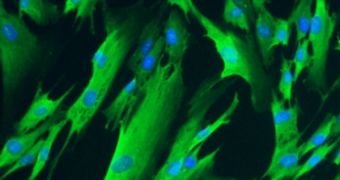Most cells in the human body can be conditioned to revert back to a state called pluripotent. This means that they can then be made to develop back into any kind of cells present in the organisms from which they were extracted. This ability is absolutely essential for developing all sorts of new treatments, given that so-called induced pluripotent stem cells (IPSc) can be used instead of embryonic stem cells. Generally, IPSc were produced via DNA-carrying viruses, but experts at the Massachusetts Institute of Technology (MIT) have now developed a way of using RNA for the same job.
One advantage of using ribonucleic acid rather than the deoxyribonucleic variety is more safety. Despite being accurately controlled for, the influence the viral agents exert on targeted cells can never be completely understood, or annihilated. Given what's at stake in this line of research – possible cures for conditions including Parkinson's, Alzheimer's and diabetes – it stands to reason that experts are looking for the safest way to produce IPSc. The thing about pluripotency is that bioengineers can turn skin cells into hepatic cells or neurons for example.
This means that patients who have a deficiency in their insulin-producing cells (diabetes) could have those batches of troublesome cells transformed using cells from elsewhere in the body. By using DNA-based reprogramming, researchers have always risked producing uncontrollable mutations in the targeted cells. Another danger is disrupting the cellular genome, a fact that can easily lead to the development of cancer. With this in mind, the innovation of MIT catches on new values. What the team there did was basically develop a method of using the molecule that connects DNA to the cell’s protein-making machinery to produce IPSc.
The investigation was conducted by Fatih Yanik, an MIT associate professor of Electrical and Biological Engineering, and Matthew Angel, a graduate student in electrical engineering at the Institute. Details of their accomplishment have been published in the July 23 issue of the open-access scientific journal PLoS ONE, which is edited by the Public Library of Science. The RNA method is actually the subject of Angel's master's thesis, the team explains.

 14 DAY TRIAL //
14 DAY TRIAL //